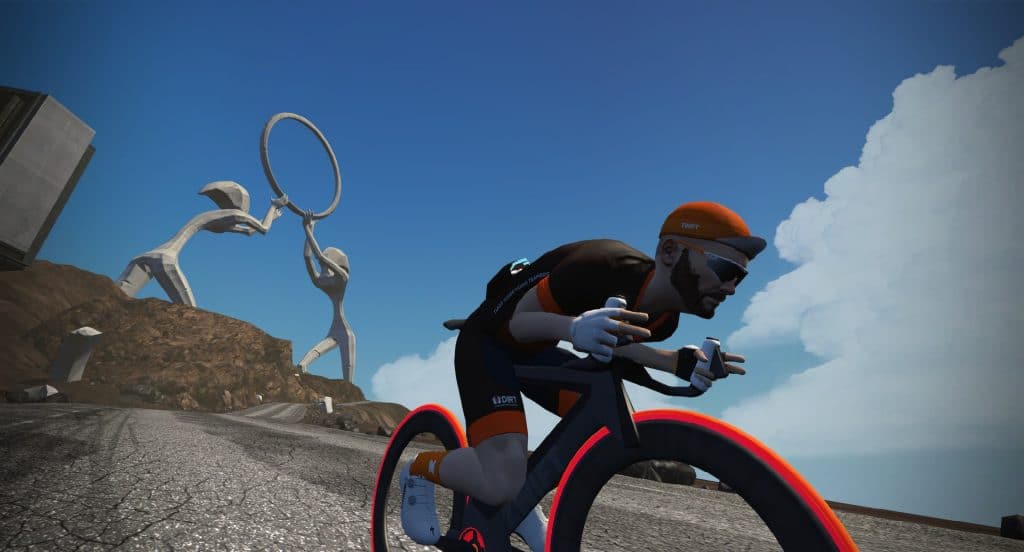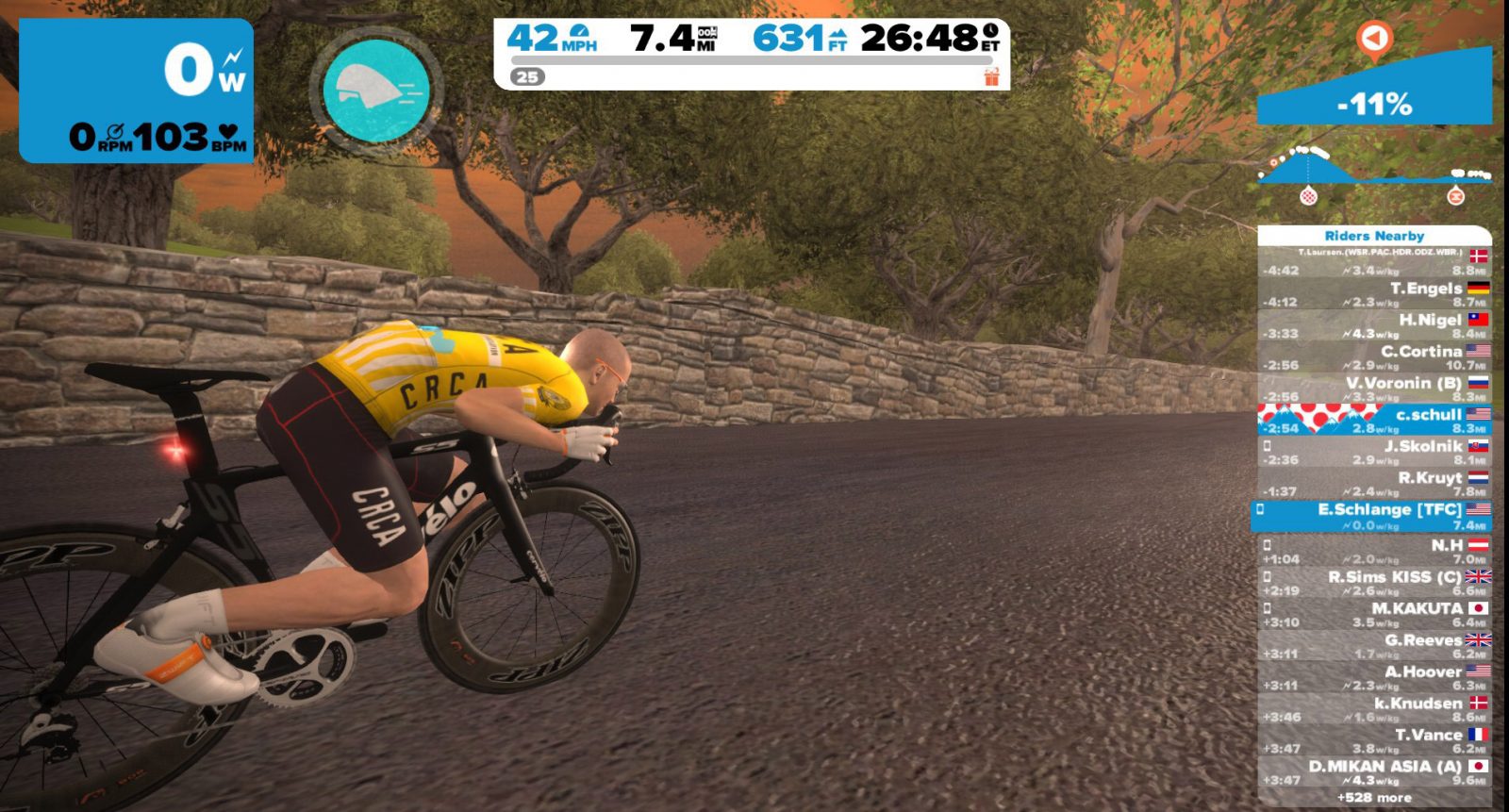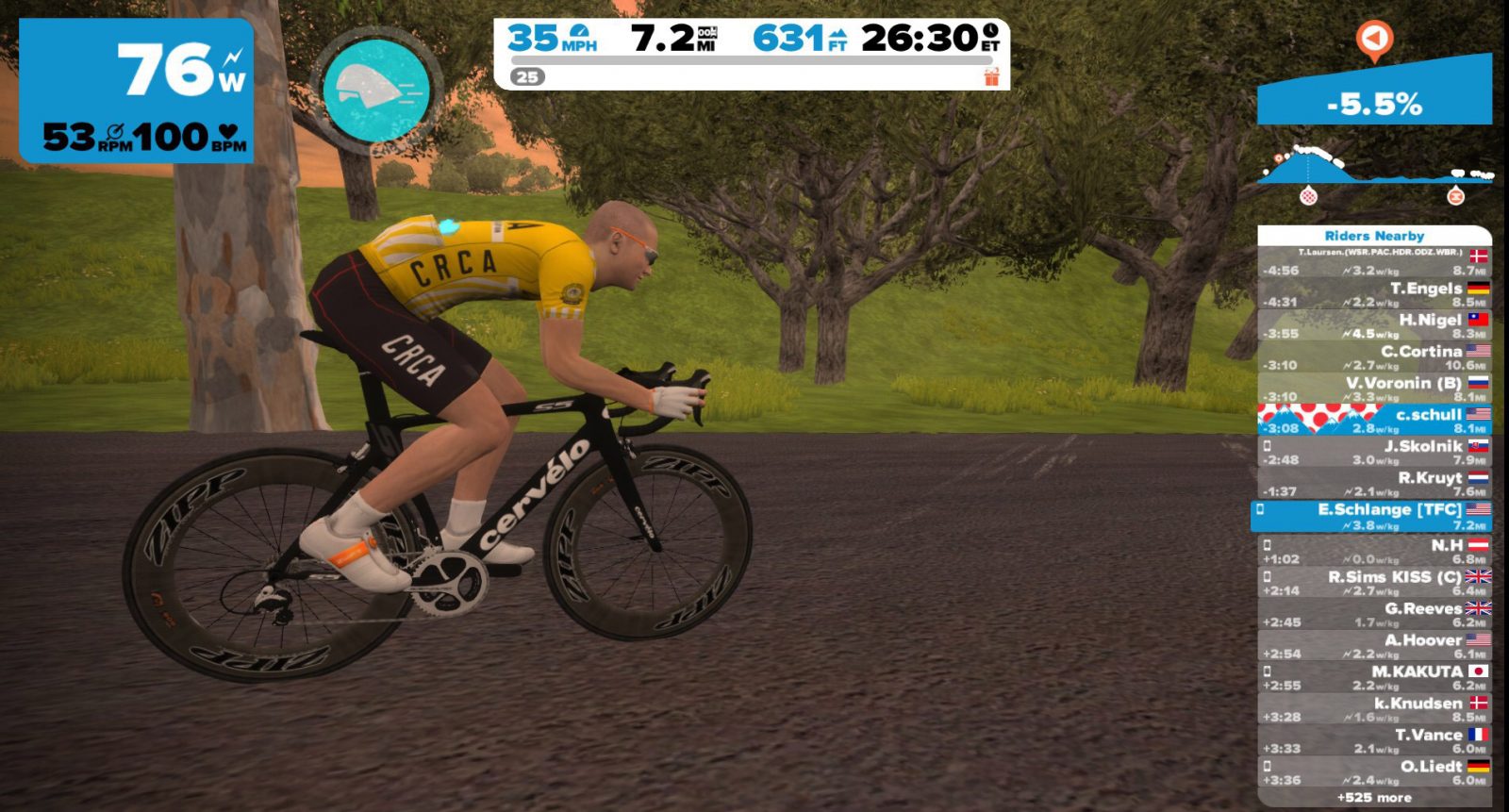Ah, the supertuck. You’ve seen the pros do it (before it was outlawed by the UCI), and you’ve probably been advised against doing it yourself.
For those unfamiliar, this very aero tuck involves sitting on the top tube and lowering your shoulders/chest onto the bars (or close to it) by bending your arms as far as they will go while holding onto the drops. It’s a fast position, but also difficult to pedal in (although Chris Froome pulled it off in glorious fashion at the 2016 TdF). It’s also a dangerous position because of how it affects your bike handling.
The good news is, you can supertuck in Zwift, risk-free! Here’s how it works.
Getting Into a Zwift Supertuck
To supertuck in Zwift four conditions must be met:
- You must be traveling at least ~36MPH (~58km/hr)
- The gradient’s decline must be at least -3%
- Your power output must be below 11 watts
- You must be out of the draft and not riding in a pack (safety first!)
Zwift will automatically place you in the supertuck if all these conditions are true. You come back out of the supertuck once any of these conditions is not met – for example, if the road flattens out to a 2% decline.

How Fast Is It?
Specific numbers are hard to come by since the supertuck behaves differently in races than free rides. But in our experience, coasting in the supertuck will let you hang with a pack that is putting out 2.5-3.5 w/kg. Of course, this varies based on rider weight, how many in the group are putting out power, steepness of decline, and other variables.
While it is possible for riders to attack on a descent and drop supertuckers, you don’t see that very often in Zwift races.
See our Supertuck Speed Tests for more >
When Should I Supertuck?
Supertuck whenever you can! Thanks to Zwift’s Pack Dynamics 4.0, you can only supertuck when riding out in the wind. If that’s you (perhaps attacking in a race, or trying to bridge up to the group) use the supertuck to your advantage.
TT, MTB, and Workout Exception
You cannot supertuck if you are riding a TT or MTB frame. Because that’s just silly!
Also, no supertucking in workouts. Even if you’re in a free ride block descending Alpe du Zwift.
Conclusion
The supertuck does not make you superfast–but it can allow for short periods of rest which are helpful in race situations. So use it wisely, but keep your eyes open and don’t get dropped while you’re resting!




